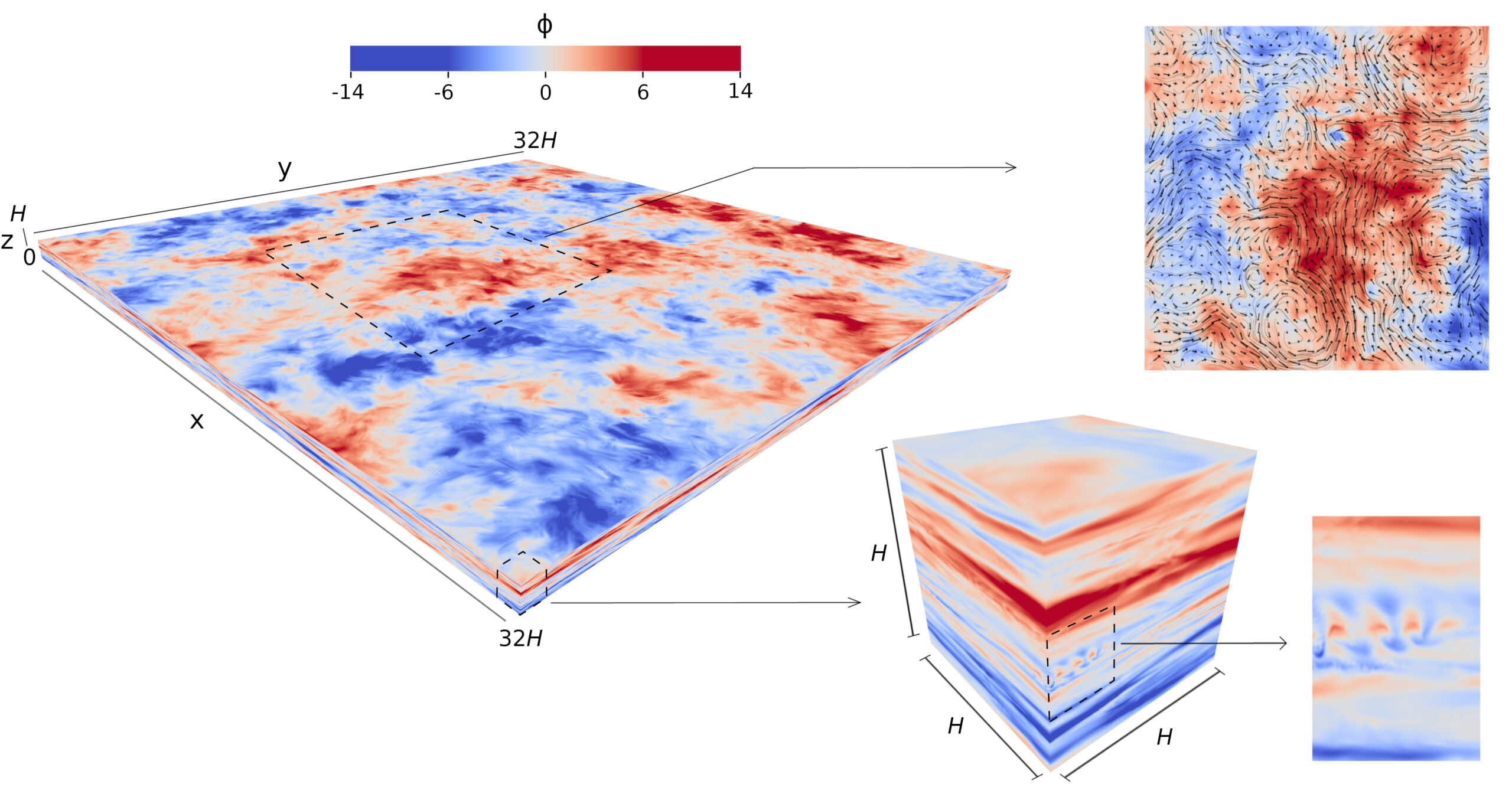The Earth’s atmosphere and of other planets have flow structures that extend over several thousand kilometers. These structures can result from global movements of the atmosphere, but also from small turbulent eddies which self-organize on a large scale. This last process, called ”inverse cascade”, involves transfers of energy from small to large scales, the opposite of what everyone can observe on a daily basis when pouring milk into their coffee: turbulence giving rise to small structures.
To demonstrate the possibility of the inverse cascade phenomenon in a planetary atmosphere, it was necessary to be able to accurately simulate a sufficiently large atmospheric domain. By accumulating 40 million hours of calculation on the CEA’s Joliot-Curie supercomputer, it was possible to carry out direct numerical simulations of flows in an atmosphere 15 km high and around 500 km wide, with horizontal and vertical resolution of only a few tens of meters. This study was made possible by the computing power available on the CEA’s latest generation supercomputer, but also by years of prior exploration of the different physical parameters, carried out at LMFA, LPENS and Buenos Aires University (UBA), which resulted in an optimized simulation model, based on the characterization of the fundamental fluid mechanics phenomena that govern the dynamics of geophysical flows.
The simulation carried out describes the energy transfers between the different flow scales: the results obtained are consistent with those of in situ measurement campaigns carried out by real aircraft, and made it possible to obtain for the first time information on the how kinetic energy is distributed between different scales in the atmosphere, which cannot currently be deduced from observations.

Visualization of density fluctuations and of the velocity field in the computational domain. Structures at scales much larger than the layer thickness are abundant in the visible horizontal plane (left), indicative of an inverse cascade of energy towards the large horizontal scales. At the same time, 3D instability patterns and small-scale features are detectable in both horizontal and vertical cuts of the zoomed-in simulation domain (bottom right), which suggests the action of a forward turbulent cascade.
More:
https://doi.org/10.1126/science.adg8269
Affiliation author:
Laboratoire de physique de L’École normale supérieure (LPENS, ENS Paris/CNRS/Sorbonne Université/Université de Paris)
Corresponding author : Alexandros Alexakis
Communication contact: Communication team










